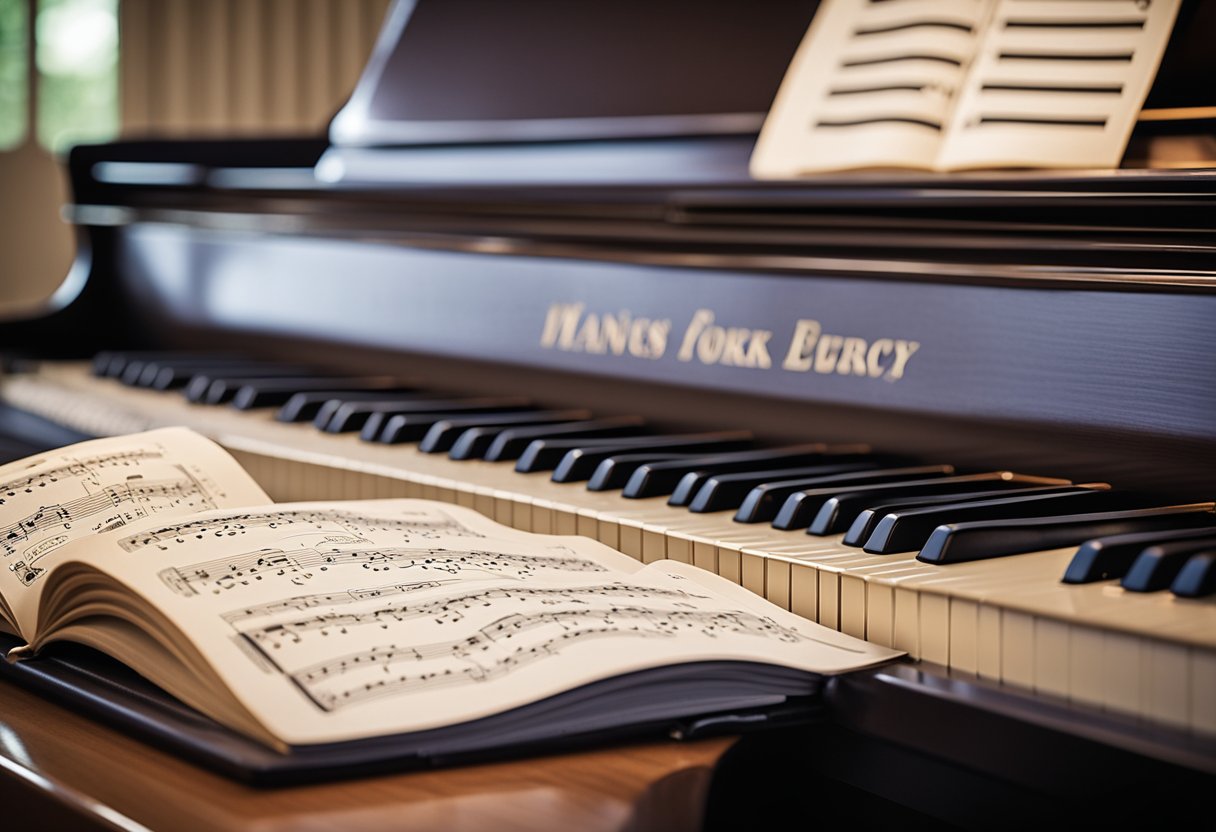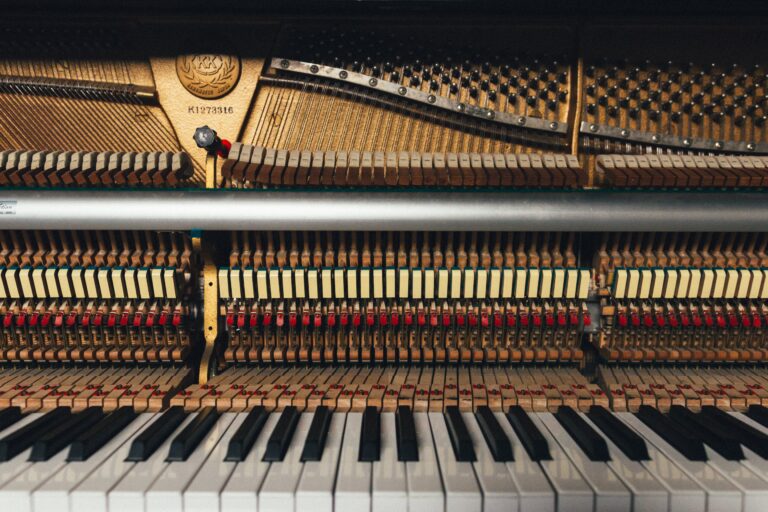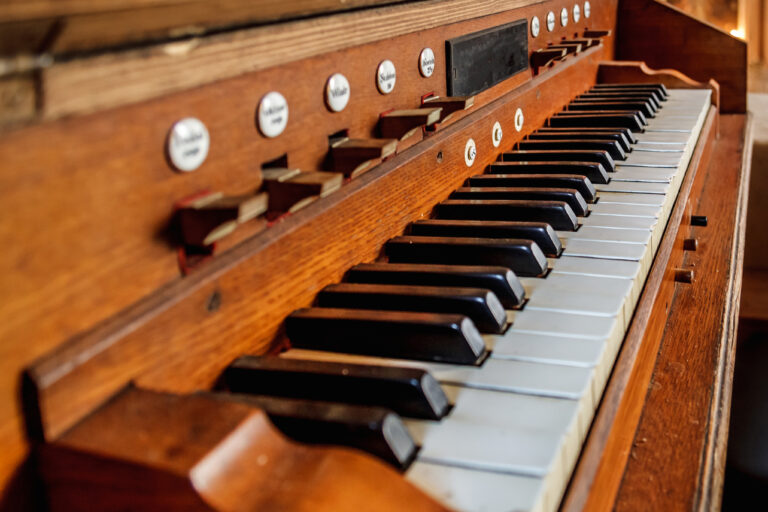The Keys to Mastery: Unveiling the Secrets of Easy Piano Learning
Learning the piano has always been a dream for many people. However, some may be discouraged by the idea that it is too difficult to learn. The truth is, learning the piano can be easy and enjoyable, especially if you have the right mindset and resources.

Firstly, it is important to understand that anyone can learn to play the piano. You don’t need to have any prior musical knowledge or experience. With the right guidance and practice, you can start playing your favourite songs in no time. Additionally, learning the piano can have numerous benefits, such as improving cognitive function, reducing stress, and boosting creativity.
Secondly, there are many resources available to help you learn the piano. From online tutorials to in-person lessons, there are options for every learning style and budget. With the convenience of technology, you can even learn to play the piano from the comfort of your own home. With dedication and consistent practice, you can quickly progress and achieve your musical goals.
Understanding the Basics

Keyboard Layout and Note Identification
Learning to play the piano starts with understanding the keyboard layout and note identification. The standard piano has 88 keys, consisting of black and white keys. The white keys represent the natural notes (A, B, C, D, E, F, G), while the black keys represent the sharp and flat notes.
The easiest way to identify the notes is by using the pattern of black keys. The group of two black keys represents the note C, and the group of three black keys represents the note F. From there, you can identify the other notes on the keyboard.
Simple Melodies and Chords
Once you have a basic understanding of the keyboard layout and note identification, you can start playing simple melodies and chords. Melodies are a series of notes played one after the other, while chords are a combination of three or more notes played at the same time.
To play a simple melody, start with a basic song and practice playing each note one at a time. Once you have mastered playing the notes, you can start playing them together to create the melody.
Chords are a great way to add depth and harmony to your playing. Start with simple chords such as C major, G major, and F major. Practice playing the chords until you can switch between them smoothly.
Practicing Techniques

Learning to play the piano requires practice, and it’s important to use effective techniques to make the most of your time. Here are some techniques to help you improve your skills:
Finger Exercises
Finger exercises are a great way to improve your dexterity and strengthen your fingers. One exercise is to play scales, starting with your thumb and moving up to your pinky finger. Another exercise is to play arpeggios, which involve playing the notes of a chord one at a time. These exercises can be practiced at various tempos to improve your speed and accuracy.
Sight-Reading Skills
Sight-reading is the ability to read and play music at first sight. To improve your sight-reading skills, start by practicing simple pieces with a slow tempo. Focus on reading the notes and playing them accurately. Gradually increase the tempo and difficulty of the pieces as you improve. You can also practice sight-reading by playing through a piece once without stopping, even if you make mistakes.
Rhythm and Timing
Rhythm and timing are crucial to playing the piano well. To improve your rhythm, practice playing with a metronome. Start with a slow tempo and gradually increase it as you get more comfortable. To improve your timing, practice playing along with recordings of songs. Focus on matching the timing of the recording as closely as possible.
Progression and Difficulty Levels
Beginner
When starting out on the piano, you will likely begin with the basics such as learning the keys and basic finger placement. With consistent practice, you will progress to playing simple songs and melodies. Beginner music typically consists of simple rhythms and melodies that are easy to follow.
Intermediate
Once you have mastered the basics, you will move on to intermediate levels. This level requires more practice and dedication to master. Intermediate music typically includes more complex rhythms and chords. You will need to learn to read sheet music and understand the relationship between notes and chords.
Advanced
The advanced level requires a great deal of skill and practice. This level includes more complex pieces with intricate melodies and harmonies. Advanced pieces require a lot of practice to master, but the end result is incredibly rewarding.
Access to Learning Materials
Learning to play the piano has never been easier. With the advent of technology, there are a plethora of resources available to you to learn how to play the piano. This section will explore some of the most popular resources available to you.
Online Tutorials
Online tutorials are a great way to learn how to play the piano. They are convenient, affordable, and accessible from anywhere with an internet connection. There are many websites and apps that offer online tutorials for all levels of piano players. Some of the most popular ones include:
- Piano Marvel
- Playground Sessions
- Skoove
- Flowkey
These online tutorials offer a variety of features such as video lessons, interactive sheet music, and personalized feedback. They also allow you to learn at your own pace, which is great for those who have busy schedules.
Sheet Music Resources
Sheet music is an essential part of learning how to play the piano. Fortunately, there are many resources available to you to find sheet music. Some of the most popular resources include:
- IMSLP (International Music Score Library Project)
- Musopen
- 8notes
- Musescore
Personal Factors
Learning the piano is not only about practicing regularly, but also about personal factors that can affect your progress. Some of the most important personal factors to consider are your age, learning speed, time commitment and consistency.
Age and Learning Speed
Age plays a significant role in learning the piano. Children tend to learn faster than adults, but that doesn’t mean adults can’t learn to play the piano. It just means that adults may need to put in more time and effort to achieve the same level of proficiency as a child.
Your learning speed is also important. Some people learn faster than others, but that doesn’t mean you can’t learn to play the piano. Everyone has their own pace, and it’s important to be patient with yourself and not compare your progress to others.
Time Commitment and Consistency
Learning the piano requires time commitment and consistency. It’s important to practice regularly, even if it’s just for a few minutes a day. Consistency is key to making progress and improving your skills.
Frequently Asked Questions
What are the first steps for beginners learning the piano?
If you’re new to playing piano, the first step is to learn the basics of music theory. This includes understanding how to read sheet music, learning the layout of the keyboard, and practicing proper hand and finger placement. Once you have a basic understanding of these concepts, you can start practicing simple songs and exercises to build your skills.
How does learning piano as an adult differ from learning as a child?
While it’s true that children may have an easier time learning piano due to their developing brains, adults can still learn to play piano effectively. The main difference is that adults may need to spend more time practicing and may need to work harder to develop muscle memory. However, with dedication and practice, anyone can learn to play piano at any age.
What is the estimated time frame to become proficient at piano?
The amount of time it takes to become proficient at piano varies depending on the individual. Some people may become proficient in a few months, while others may take years to reach that level. It’s important to remember that consistent practice is key to improving your skills.
Can one effectively learn piano without a teacher?
Having a teacher can be helpful, but it is possible to learn piano effectively without one. Many resources are available, such as online tutorials and instructional books, that can help you learn the basics of piano playing. However, note that having a teacher can help you progress faster and provide valuable feedback on your playing.
How do the challenges of learning piano compare to other instruments?
Learning piano can be challenging, but every instrument has its own unique challenges. For example, string instruments require precise finger placement and tuning, while wind instruments require proper breath control. Choose an instrument that you enjoy playing and are willing to put in the time and effort to learn.
What are the best practices for learning piano chords quickly?
The best way to learn piano chords quickly is to practice them regularly. Start by learning the basic chords and then practice transitioning between them. Also, practice playing chord progressions in different keys and with both hands. With consistent practice, you can become proficient at playing piano chords in no time.






